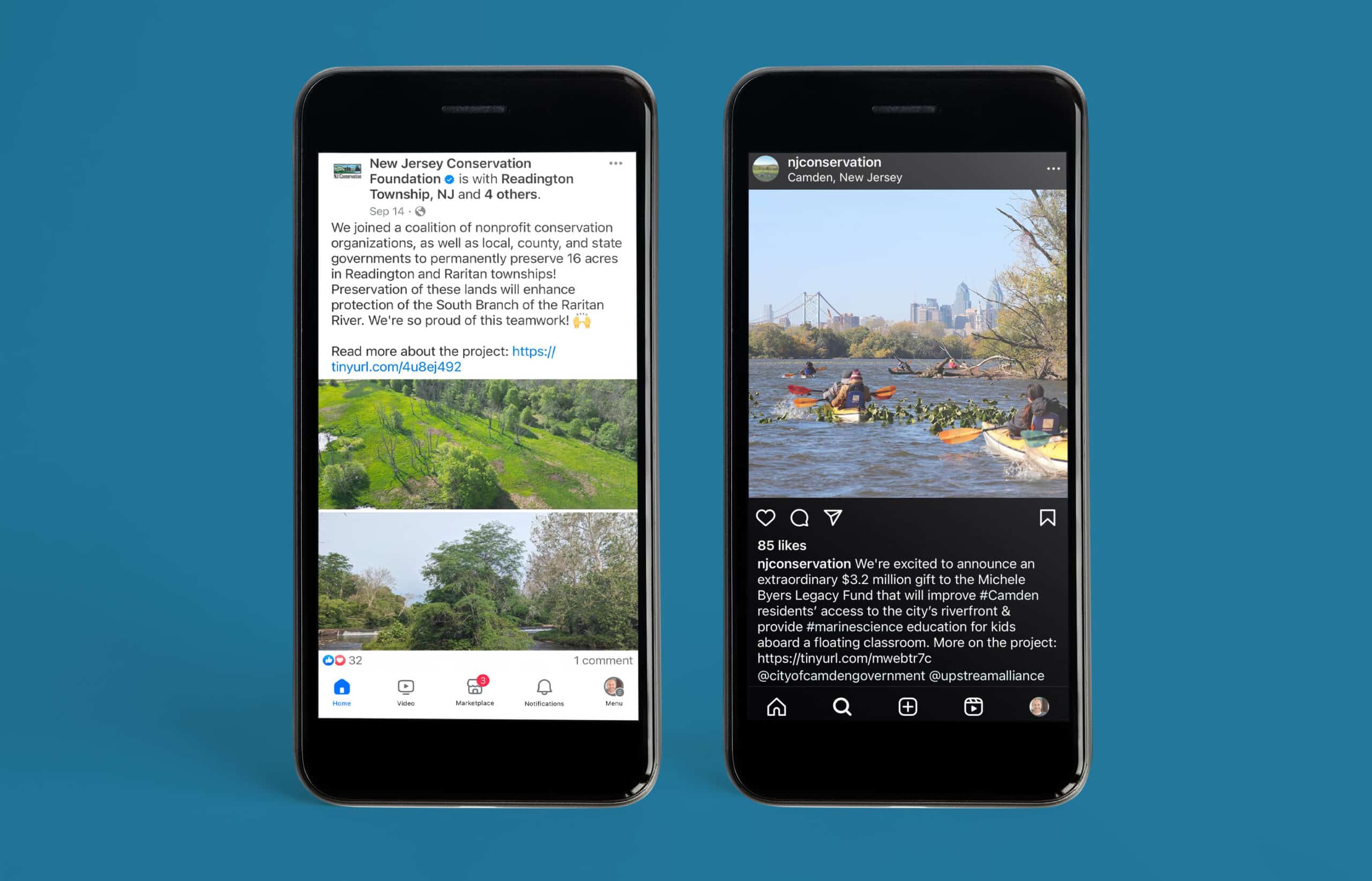November 15, 2023
The Key to Online Success?
Know Your Audience.
Say you’re a Swiftie. And one day, waiting in line at the coffee shop, you notice that the person in front of you is wearing a Taylor Swift T-shirt. Here’s someone who shares in your passion. You strike up a conversation. It turns out that you both went to the same school. How great is that? But it gets better; you’re from the same hometown. But wait, it can’t be – you were both born in the same hospital, only days apart? Whether you now befriend this person for life, or simply walk away with a smile on your face, the outcome was positive.
How does this hypothetical encounter relate to nonprofit marketing? As I’ve argued on this blog and on LinkedIn (literally), a nonprofit’s mission is everything, and as such, mission should be the foundation of all of your online communications. But after setting that floor, you need to go deeper, and speak as closely as you can to your actual user. And in order to do that, you need to know your audience.

In our Swiftie example above, a shared passion for Taylor Swift attracted you to this individual in the first place. (You’re on the same mission). And as you engaged, commonalities – some very specific – drew you closer to them, providing safety and reassurance. This is the two-step framework you should be following to achieve successful marketing outcomes, and it’s based on a deep understanding of who you want to attract.
In fact, if I could give only one piece of advice that, if rigorously followed, would almost certainly result in a nonprofit’s success, it would be to know your audience as well as you can, and then base every pixel, subject heading and social post around that knowledge.
What Does it Mean to “Know Your Audience?”
Knowing your audience means having a comprehensive understanding of the groups and individuals that directly sustain your organization. In the nonprofit world, these are typically donors – but depending on your niche, it could just as easily be governmental/civic agencies, industry professionals, for-profit businesses, referral sources and more. You can, of course, have more than one audience – and these can include the internal groups such as volunteers and staff that support your day-to-day operations.
You should seek to understand your audience on two levels. First, in a general sense: What are the overall groups or segments that you serve or are looking to attract? For example:
- A grant-making organization may seek to attract programs and individuals looking for funding
- An educational support organization may look to reach teachers and other educators
- An organization that addresses food insecurity may look for restaurants and other food providers, and so forth.
Next, you’ll want to dig deep within those general audiences to understand the specific individuals (or “personas”) who comprise that group. This starts by identifying the classic, core attributes that make up an audience member profile: gender, age, profession, giving history, geographic location and so forth, but eventually, you’ll want to go even further, looking for what are referred to as “psychographic” characteristics, including:
- Interests
- Reasons for giving/participating
- Values
- Social status
You won’t need to interview hundreds of people to develop a basic picture of who your audience members are. 15-30 responses can help you reach what’s known as saturation point – where you’ll hear the same themes being repeated, and which thus indicates that the group’s responses are generally representative of a larger pool of individuals.
Whether you build your findings into a formal persona template, or organize them into a spreadsheet, you’ll now have a model of what your ideal audience member(s) look like.
Knowing Your Audience, Client Example: The New Jersey Conservation Foundation
It’s a powerful thing to know your audience. Rather than building your brand and outreach based on feel or anecdotal evidence alone, you’ll now have a target around which to direct all of your marketing and creative decisions. It’s a terrific resource to have handy when considering investments like a website redesign, or an ad campaign.
Here’s an example of how a deep understanding of their audiences helped one of our own clients refine their marketing and set the long-term direction of their communications.
The New Jersey Conservation Foundation

The New Jersey Conservation Foundation is dedicated to protecting public spaces in New Jersey for the enjoyment of all. Their primary function is to purchase land, which is then placed into trust (the land is then formally considered a “preserve”), putting it out of the reach of commercial development.
General Audience(s): Conservationists and outdoor enthusiasts
Persona Characteristics:
Core:
- Age: 18 – 75
- Gender: 50/50 split male-female, leaning female
- Location: New Jersey
Psychographic:
- Generally affluent
- Politically active
- Environmentally Conscious/Concerned about overdevelopment
From this audience model and related findings, we drew the following inferences, which we then helped the client implement into their marketing:
1. Focus on individuals who love the outdoors
That individuals who support a conservation foundation were fond of the outdoors was an obvious takeaway, but our research findings underscored that much of the client’s audience were avid users of foundation-protected spaces. To this end, we redesigned the client’s website around hikers and nature lovers, providing them with tools to locate and partake in the very trails that NJCF helped to preserve, and in the process reinforce the audiences’ commitment to the foundation’s work:

2. Show the impact of land purchases
Supporters of the New Jersey Conservation are generous – but like any donor, they wanted to see the impact their dollars were making. To this end, we encouraged the foundation’s communication team to share with their audiences where their support dollars go, giving donors a sense of agency in conservation efforts, and the feeling that they’re making a positive impact in their own backyard:

3. Keep audiences up-to-date on conservation efforts within the state, and provide tips on what they themselves can do to preserve nature.
We knew from our interviews that supporters of the foundation were deeply committed to preventing overdevelopment in the state. They were regular consumers of news and acted quickly based on their learnings. So, to bring their audiences further into the fold, the foundation produces an outstanding weekly email newsletter. Written by the NJCF’s three executive directors, The State We’re In offers insights on conservation, and an assessment of the political landscape regarding conservation efforts in New Jersey. This is an excellent way for the foundation to reinforce their expertise in both conservation and in navigating the political landscape, further cementing their supporters’ trust:

Over the past few years since the foundation implemented these moves, they’ve grown their mission, clarified their public presence, and reinforced their brand in the minds of thousands of supporters. This success can be attributed, in part, to the foundation’s work in knowing their audiences and putting those findings to use across their digital ecosphere.
Don’t Just Know Your Audience. Love It.
Recently, I was invited onto Rhea Wong’s excellent podcast, the Nonprofit Lowdown, to talk about web design for nonprofits. As things wrapped up, Rhea asked something I didn’t expect: “what’s the one piece of guidance you would give our listeners to get the most out of their digital marketing?”
Without really thinking about it, I said, “love your audience.” In retrospect, I think that was spot-on. What I was saying was, know your audience so well that you then honor them by providing experiences and communications that show you care about their needs, wants and interests.
The New Jersey Conservation Foundation’s success is just one example of how knowing your audience can improve marketing decision-making and ROI. Organizations that invest time and resources into understanding their audiences – truly loving those audiences – end up with stronger, more focused communications that yield greater impact (whether they’re Swifties, or not).
TAGS:
Visiting?
Here we are.
350 Springfield Avenue #200
Summit, NJ 07901
info@bcsinteractive.com
973.377.1175
Are you ready to learn?
As a digital marketing agency for nonprofits, we write about the work and campaigns we produce, and share what we’ve learned along the way.
Count Me InSubscribe to the Blog
Sign up for monthly marketing insights you can put to use right away.
Subscribe Here